- Make It Yourself Lavender Heart-Shaped Bath Bombs!
- 20 Things You Never Knew About “Down There”
- 12 Best Foods For Those Suffering From Arthritis Pain
- 12 Personal Hygiene Mistakes Almost Everyone Makes (Mom Never Told You About #4!)
- 15 Medicinal Plants And Herbs From The Cherokee People
- 12 Mind-Blowing Benefits Of Drinking Coconut Water During Pregnancy
- 12 Outstanding Winter Foods That Won’t Fatten You Up Like A Christmas Turkey
14 Household Items That Can Cause Cancer
As a caring parent and spouse, you want to ensure that your family is as healthy and happy as possible. Who doesn’t want to provide the highest-quality and safest things for their household? It probably never crosses your mind that some of the products you bring into your home on a regular basis contain cancer-causing substances. We assume that if something is for sale in a store, it must have been tested and proven to be safe, right? This can be a dangerous assumption, and it’s one that no one should make in today’s world. Keep reading and see if your home has any of these cancer-causing items so that you can remove them and make your home safe again.

Photo credit: bigstock.com
1. Scented Candles
Most scented candles use lead wicks, while lead is one of the most disastrous things for your health. It is used to make the wicks last longer and burn more steadily, but lead is a deadly toxin that provokes behavior problems and hormone disruption. Even though the U.S. Consumer Council has banned the sale of lead wick candles, you should still check the item you are going to purchase. Hold the wick and try to use it to draw a line on the paper. If you cannot see a smudge or line, your candle probably does not have a lead wick.
Paraffin wax also creates highly toxic compounds. Toluene and benzene are both known carcinogens that are released into the air anytime paraffin wax candles are burned. Some candles also use artificial colors and artificial fragrances, which you inhale whenever you burn one of these candles.
Continue to Page 2
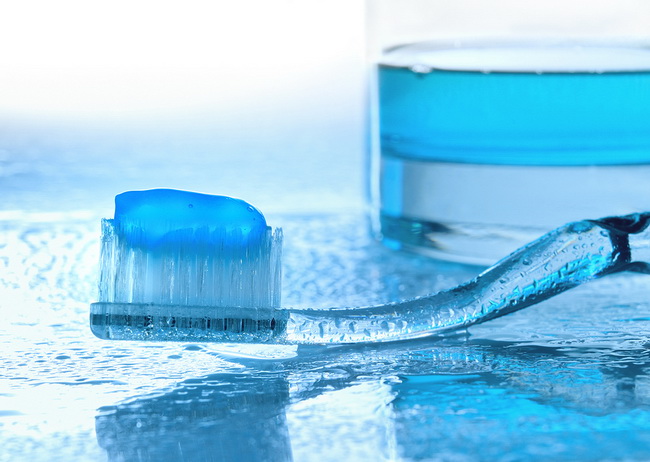
Photo credit: bigstock.com
2. Tartar Control Toothpaste
Some of the most trusted name brands of toothpaste that you would assume are safe contain terrible ingredients that you don’t want near your family. Read the labels carefully.
Many products, especially tartar control toothpastes, contain saccharin, which is a known carcinogenic; dyes FD&C Blue #1 (and sometimes other artificial colors), which are linked to behavior problems and certain types of cancer; and also large amounts of fluoride, which has been linked to heart disease, lower IQ levels in children, and is believed to calcify the penal gland.
Try making your own safe and natural toothpaste by mixing coconut oil, baking soda, and a few drops of peppermint essential oil.
Continue to Page 3
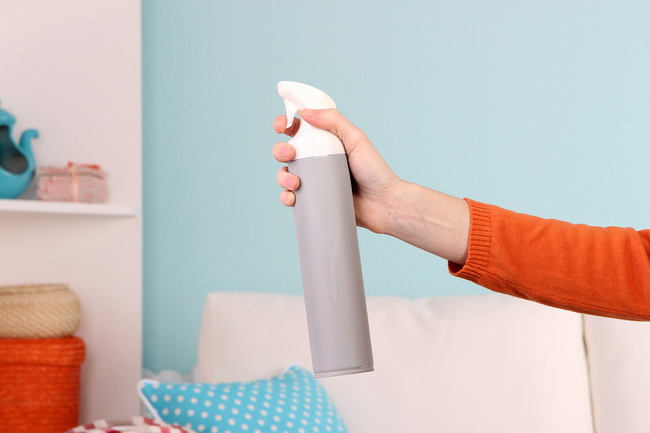
Photo credit: bigstock.com
3. Air Fresheners
This is probably the number one product that average Americans have in their homes in one form or another. The Natural Resources Defense Council reported that almost all of the common air-fresheners, even those labeled as being “all-natural” contain chemicals with serious carcinogenic potential.
Any household item that contains some type of fragrance or “parfum” has a toxic chemical called phthalate. There are many types of phthalates that have different health consequences, but almost all of them have one thing in common — they affect reproductive health. Many of these air fresheners do not clean the air as we believe they will, but they do exacerbate respiratory problems such as asthma. As much as possible, choose fragrance free products and make your own homemade air fresheners to avoid phthalates.
Continue to Page 4

Photo credit: bigstock.com
4. Hair Color
Many women (and a few men) wouldn’t dream of eating anything that isn’t natural and organic, but they have no problem putting cancer-causing chemicals on their heads once a month. Although ingredients vary, most home hair coloring kits contain quaternium-15 – a known neurotoxin, skin irritant, and formaldehyde releaser; diethanolamine (DEA) – a carcinogen that interacts with nitrites to form a carcinogenic nitrosamine; fragrances – a cause of contact dermatitis and a carcinogenic potential; phenylene-diamines and propylene glycol – carcinogens that can cause contact dermatitis.
There has also been an association between hair color and multiple myeloma, non-Hodgkin’s lymphoma, and other types of cancer. Perhaps it’s time we decided to stop being partially “natural” and go all the way. Embrace the gray, and let’s age gracefully.
Continue to Page 5

Photo credit: bigstock.com
5. Deodorants and Antiperspirants
Almost everyone relies on some type of deodorant to control body odor and perspiration. However, these products contain cancer causing chemicals such as aluminum chlorohydrate. This is particularly dangerous to place such elements on the skin, as it has no protection from chemicals. The compounds go directly into the blood stream and the organs of the body, and cause cancers, which is one reason why breast cancers have become so prevalent in Western Society.
Many antiperspirants also contain parabens, which imitate estrogen in the body and encourages the growth of cancer cells. The exposure to parabens has also been linked to nausea, depression of the central nervous system, and damage to the digestive system. Yet, to make your personalized anti-sweating products is an easy job to complete.
Continue to Page 6

Photo credit: bigstock.com
6. Dog and Cat Flea Collars
No one likes fleas, but the truth is flea collars only work around the neck area and are not effective repelling or killing fleas anywhere else on the body. In addition, many flea collars contain a known neurotoxin and carcinogenic compound called propoxur, which can harm your pet, your children, and yourself.
Get rid of fleas naturally by bathing your pet with a shampoo designed for them. You can also make your own flea-killing spray by mixing one quart of water with one cup of vinegar (either white or apple cider will work), then add 10 drops of lavender essential oil. Spray areas where your pet sleeps, plays, and any place else where your pet likes to hang out. You can also spray your pet with this mixture — just be sure to avoid the eye area.
RELATED: 10 Foods To Protect You From Cancer
Continue to Page 7
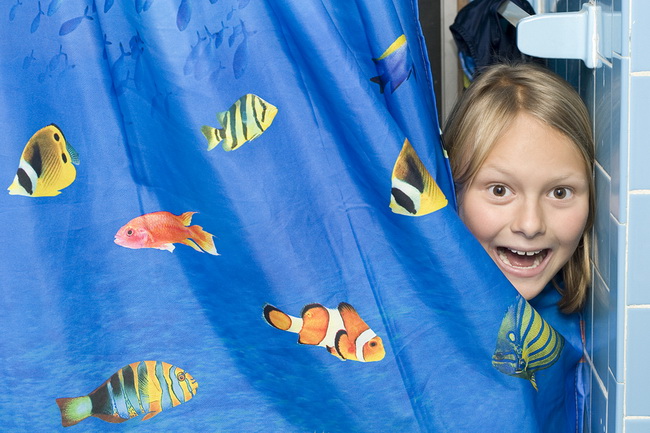
Photo credit: bigstock.com
7. Shower Curtains and Plastics
Shower curtains are one of the most common ways people get PVC into their homes. The third-most produced type of plastic in the world, PVC can be very helpful in certain situations, such as sewer pipes. Yet, by releasing toxic compounds carcinogens, it has been shown to affect the respiratory and reproductive systems and cause damage to the central nervous system, the liver, and kidneys.
We can’t avoid plastic in our daily lives unless we decide to find a cave and live like our ancestors. However, you can limit the amount of plastic you allow into your life. Give your children those toys that do not contain PVC. Use alternative food storage containers such as glass or stainless steel. Choose shower curtains made from natural materials such as linen, cotton, birch, or hemp.
Continue to Page 8
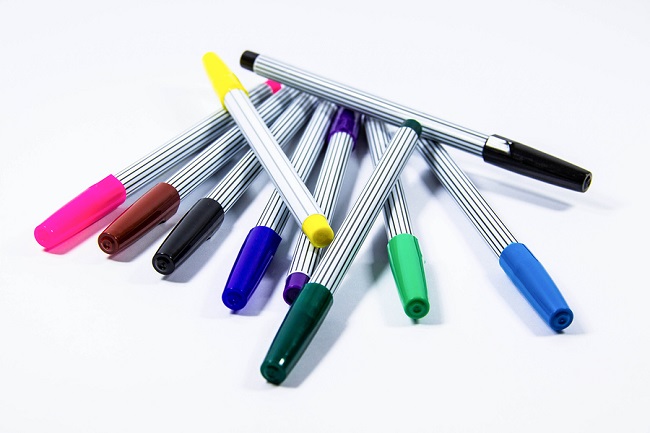
Photo credit: bigstock.com
8. Art and Crafts Supplies
You probably cannot imagine how something as seemingly harmless as a marker can be harmful to your health, but it’s true. Almost all glues, acrylic paints, and the solvents used in marking pens, contain toxic chemicals that have been linked to organ damage, allergies, and certain types of cancer.
Although federal law, entitled the Hazardous Art Materials Act, says that art supplies sold in the United States must have warning labels if they contain any type of dangerous toxin, however, they don’t need to actually list the ingredients by name. Because of this, you should only purchase products that have been certified by the Art and Creative Material Institute (ACMI). Products that have this certification mean that they have been independently tested so that they are safe enough even for small children.
Continue to Page 9
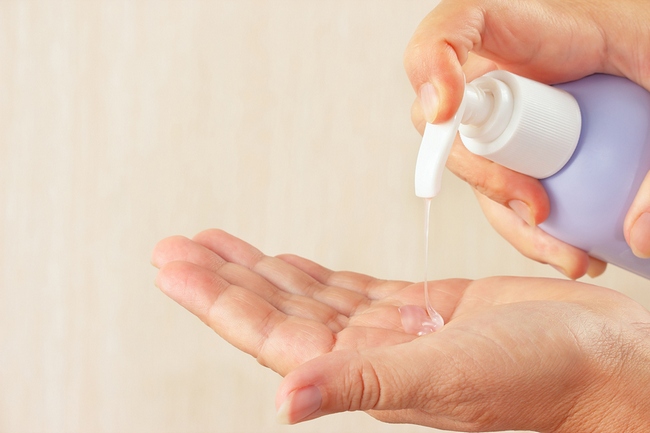
Photo credit: bigstock.com
9. Antibacterial Products
What do you think of when you see the words “antibacterial”? It makes you feel clean and safe, doesn’t it? Well, you might be clean, but safe? There is an ingredient used in many antibacterial products called triclosan, which has been banned by the European Union because studies have shown that this product is most likely a carcinogen, and there is no doubt that it is a hormone disruptor. Even the FDA has suggested that companies stop using triclosan in their products since the safety of this ingredient is in question.
Don’t wait for the FDA to make a decision. You can make natural soaps that have short ingredients lists. Don’t be fooled by “body washes,” as many of these contain no real soap, but are simply more chemicals. If you enjoy using hand sanitizers, use ones that contain alcohol, not triclosan.
Continue to Page 10
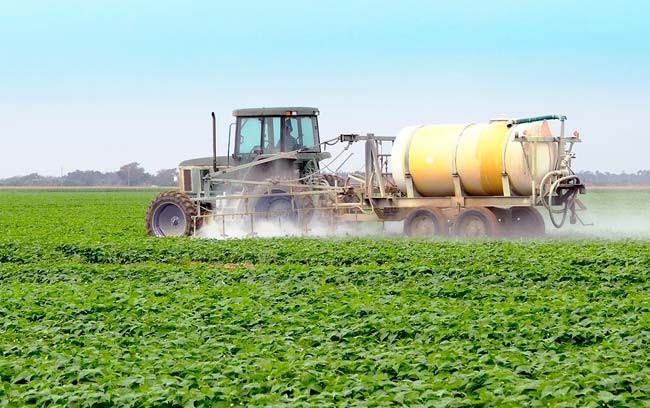
Photo credit: bigstock.com
10. Pesticides and Herbicides
Even if the bottles claim to be “environmentally” or “pet” friendly, the weed killers and pesticides are made to destroy weeds and bugs. This means they can also do serious harm to us! One of the famous herbicides has been shown to cause reproductive and kidney damage in mice. A popular ant and roach killing spray has been found to irritate the eyes and affect profoundly our central nervous systems. Pesticides might not show immediate symptoms but over time can lead to serious health problems, including cancer.
You don’t really need to buy any of these products. Pour boiling water on weeds growing in cement cracks or sidewalks. Spread boric acid safely into cracks to deter ants and cockroaches from making an entry. Plant chrysanthemum flowers in your garden to naturally deter fleas, mosqs, spiders, and ticks.
Continue to Page 11
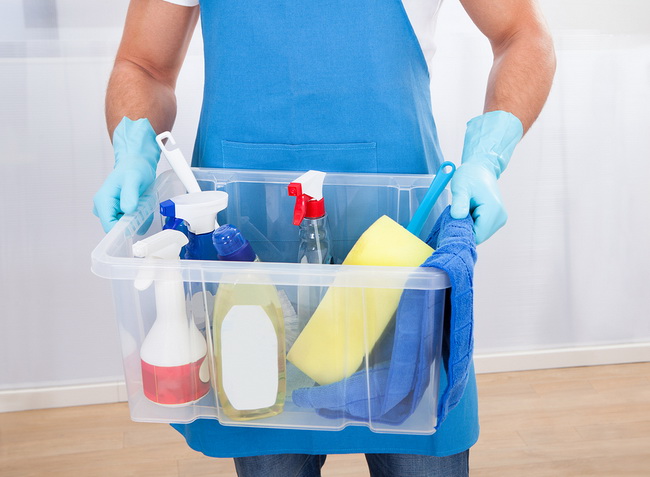
Photo credit: bigstock.com
11. Kitchen and Bathroom Cleaners
You know those cleaners that are meant to scrub your sinks, tubs, and toilets? The ones that look like pretty sand and generally come in cardboard shakers? We don’t want to name names, but these are loaded with toxic ingredients such as crystalline silica, which is a known carcinogen as well as an eye, lung, and skin irritant. Silica is a known carcinogen as listed in the 1994 Material Safety and Data Sheet. Some of these cleansers also contain “parfums,” which, like air fresheners, contain carcinogenic phthalates.
For a disinfecting, natural cleanser mix some vinegar and baking soda, or lemon juice and baking soda. These will neither endanger your home, nor scratch the surfaces!
Continue to Page 12
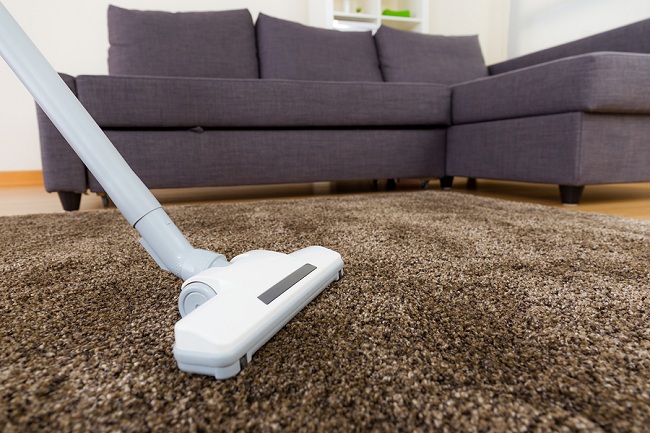
Photo credit: bigstock.com
12. Carpet Cleaners
No one likes a dirty carpet or sofa, but many of these fabric cleaners that offer “super stain removal” use an ingredient called perchloroethylene, or tetrachloroethylene, which has been linked to an increased risk of lung cancer. Sometimes carpet cleaners use a compound called naphthalene, which is the main ingredient in mothballs and has been shown in many studies over the years to increase the risk of developing lung cancer or throat cancer.
Cleaning your carpet and sofa is as simple as walking into your kitchen. Baking soda is great at removing odors, and plain white vinegar can remove dirt and stains. Sprinkle your carpet with baking soda and allow it to sit for 20 minutes, and then vacuum. If you want to remove stains, add some white vinegar and water and scrub the affected areas. Allow to dry, then vacuum.
Continue to Page 13
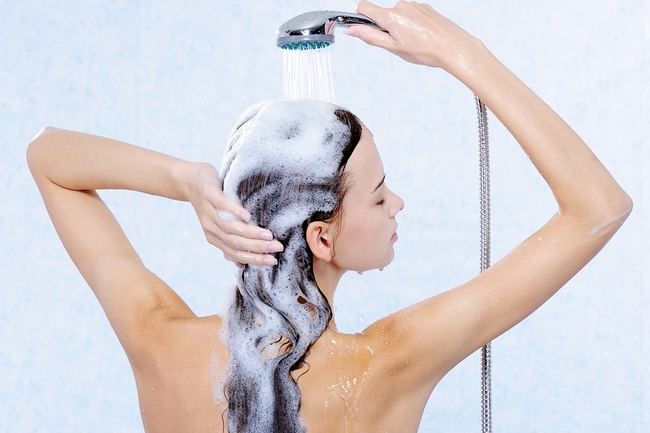
Photo credit: bigstock.com
13. Hair Shampoos and Conditioners
This is a really hot topic as of late. Many people have been unaware of the toxins that are used in personal care items, even those that are labeled as being organic or natural. Read the labels and you will find chemicals such as polyethylene glycol (PEG), cocamide DEA, and sodium lauryl sulfate, which make cancer causing agents when they are used together.
Read also: 15 Ways To NOT Get Cancer
You can make your own natural personal care products at home – there are dozens of recipes online that will tell you exactly how to make what you want and need with the ingredients that are readily available.
Continue to Page 14
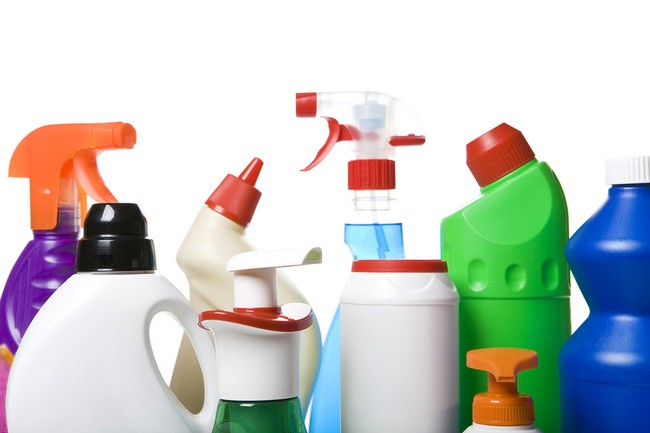
14. Whiteners
Almost every type of laundry whitener, toilet cleaner, mold remover, and scouring powder has chlorine bleach in its formular. Many municipalities even add chlorine to drinking water to kill bacteria. Although this sounds like a good way to kill bacteria, the effects can be acute. You are exposed to the fume, when you scrub, and later on when you shower or wash your hands. Chlorine affects the skin, gets absorbed into the blood, irritates the respiratory system, and is a major cause of thyroid dysfunction.
You don’t need chlorine bleach to whiten or kill bacteria. Plain vinegar will help whiten clothes in the wash, remove static cling, and clean and disinfect toilets. Baking soda will work as well as any cleanser. You can reduce your exposure to chlorine in your homes water by installing a whole house filter.
Continue to Page 15
































